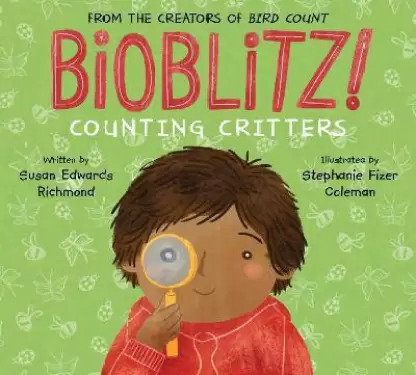Join author Stephanie Fizer Coleman and illustrator Susan Edwards Richmond to discuss “Bioblitz!”
BOOK DISCUSSION DETAILS
12/10/2022
TATNUCK BOOKSELLER
18 LYMAN ST
WESTBORO, MA 01581-1459
12/10/2022
AESOPS FABLE
400 WASHINGTON ST STE 200
HOLLISTON, MA 01746-1342
12/10/2022
PARK STREET BOOKS
504 MAIN ST
MEDFIELD, MA 02052-2515
12/10/2022
THE CONCORD BOOKSHOP
65 MAIN ST
CONCORD, MA 01742-2593
About the Author:
Susan Edwards Richmond is the author of Bird Count (Peachtree), winner of the Parent’s Choice Silver Award and the International Literacy Association’s Primary Fiction Award. A passionate birder and naturalist, Susan teaches preschool on a farm and wildlife sanctuary in eastern Massachusetts. She earned her M.A. in Creative Writing from the University of California, Davis, and is an award-winning poet with five collections of nature-based poetry for adults. She is happiest exploring natural habitats with her husband and two daughters.
About the Illustrator:
Stephanie Fizer Coleman is an illustrator and freelance designer. She has created the art for many children’s books and loves drawing animals. For her 100 Days project in 2018, she drew one hundred birds. Stephanie lives and works in West Virginia.

About the Book:
A young boy and his cousin compete to identify the most different species on a biodiversity count day at a local park
You might be amazed at the large number of insects, birds, and small mammals that inhabit even a very small plot of land. In this story Gabriel’s dad, a ranger for the local municipal park, is helping with a Biodiversity Day (or Bioblitz), and he invites Gabriel and his cousin Ava to participate. With Gabriel’s expertise in bugs and Ava’s eye for birds, the two cousins are eager to start the hunt in the park. They are placed on different teams, competing to see which group finds the most species of animal life in the time allotted.
Readers follow the two teams through a variety of habitats, where they spot dozens of different species over the course of the day. Kids will enjoy finding all the species (some are hidden in the illustration) that appear on the lists compiled in each habitat. Several different techniques for viewing species—rolling logs to discover critters living underneath and shining lights on white sheets at night to attract moths, for example—are highlighted.
Plot action in this community science adventure revolves around the competition between the cousins, who check in with each other at intervals to compare lists. In the end, Ava’s team spots one more species than Gabriel’s, but Gabriel earns a special award for discovering a species of special concern in their area, a blue-spotted salamander. Because of all they have learned from the Bioblitz, the cousins realize that the real winner is the park and all its visitors.
After reading Bioblitz!, students—as well as their parents and teachers—will be eager to participate in a biodiversity day in their own community!














